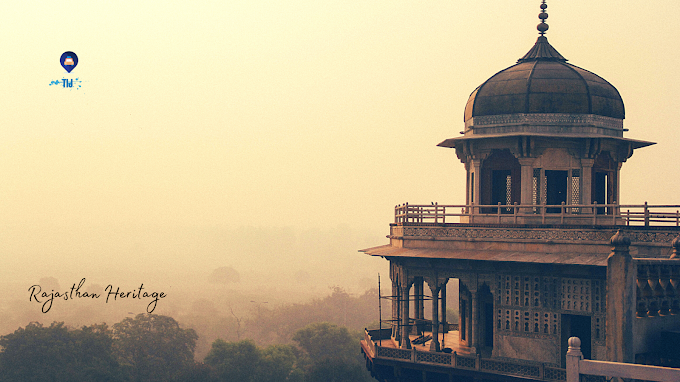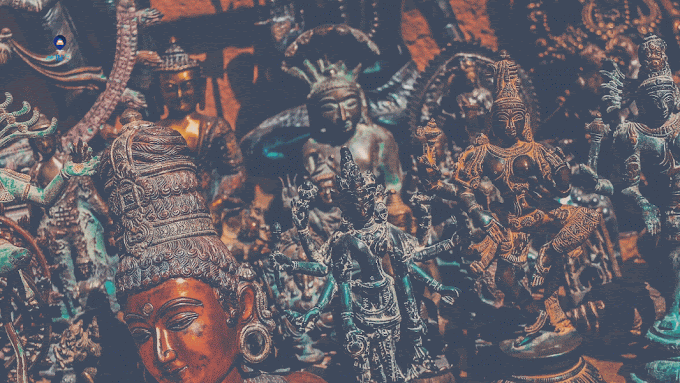This is Some Short Historical Facts in Kota | Rajasthan
The records of the metropolis date back to the 12th century A.D. Whilst the Hada Chieftain, Rao Deva, conquered the territory and founded Bundi and Hadoti. Later, inside the early 17th century AD at some point of the reign of the Mughal Emperor Jahangir, the ruler of Bundi -RaoRatan Singh, gave the smaller principality of Kota to his son, Madho Singh. Since then Kota became a trademark of the Rajput gallantry and culture.
The south-eastern location of Rajasthan referred to as Hadoti comprises of Bundi, Baran, Jhalawar, and Kota is a treasure of records relationship again to several centuries. Prehistoric caves, artwork, ambitious forts, and the effective Chambal River hurtling from the Vindhyas are dotted within the vicinity. When Jait Singh of Bundi defeated the Bhil Chieftain Koteya in a war, he raised the first battlement or the 'Garh' (fort) over his severed head. The Independent nation of Kota has become a truth in 1631 while Rao Madho Singh, the second son of RaoRatan of Bundi changed into made the ruler, with the aid of the Mughal Emperor Shah Jahan. Soon Kota outgrew its determined kingdom to become larger within the region, richer in revenue and extra powerful. MaharaoBhim Singh performed a pivotal position in Kota's records, having held a 'Mansab' of 5 thousand and being the primary in his dynasty to have the name of Maharao. Kota is located at the banks of the Chambal River and is unexpectedly emerging as an essential commercial center. It boasts of Asia's biggest fertilizer plant, precision tool unit, and atomic power station close by. Surprisingly unexplored, the Kota area of Rajasthan has some incredible treasures for the traveler to take domestic reminiscences of. Its impregnable fortresses, sprawling palaces, exquisitely wrought palaces, and lovable waterways act as a brilliant foil to its unusual flora and fauna and delicate fresco Paintings.
Cab Service in Jodhpur is the Best Way to Explore the Kota Rajasthan. To get More Historical facts.
Chambal River Historical facts
Situated at the banks of the Chambal River, at an essential juncture of the trade direction between Delhi and Gujarat, Kota is Rajasthan's Fifth Largest City. This Bustling, sprawling town is also referred to as the industrial capital of the country. The tentacles of the cutting-edge world have the metropolis in its grip with the Chambal Valley Project giving it a chief function at the country's business map. Chemicals, fertilizers, artificial fibres, record and complex devices, enterprise's mainstay, have helped in pushing this historical metropolis into the forefront of modernization. Yet reminiscences of its historical hyperlinks linger strongly. Present-day Kota owes its foundations to a Kotya Bhil warrior who 800 years in the past built a small fortification at Akelgarh and positioned up a protecting dust-wall round it all the manner to Retwali. In 1580RaoMadho Singh had reinforced both the fortification and the wall. In time to return, Kota acquired the Hallmark of Rajput strength in addition to subculture.
Historical Events In Kota | Rajasthan Tour facts
The history of Kota describes the ancient history of the town. As a distinguished landmark of the Rajasthan kingdom of India, Kota speaks of a totally enticing past. The preliminary records of Kota state that the place turned into under the rule of a Chieftain referred to as Rao Deva who belonged to the Hada network. In later years, Kota has become the ruling floor of the chief of the Bhil network. But in historic warfare, this chieftain lost his dominion to the ruler of Bundi - Jait Singh.
The historical information of Rajasthan shows that during the 12th century AD itself, Kota used to exist in India. Till the early periods of seventeenth-century AD, Kota was dominated with the aid of the amazing king RaoRatan Singh. In 1631, Kota turned passed over to RaoMadho Singh who turned into the son of RaoRatan Singh via the Mughal Emperor Shahjahan. This, in turn, transformed Kota into an unbiased country of Rajasthan. MaharaoBhim Singh had a full-size contribution in the direction of the historical enrichment of Kota who fashioned Mansabs of 5 thousand inside the vicinity.
Since Kota had been dominated through numerous effective dynasties of the bygone generation, hence the cultural area and the social scenario of the location replicate the wealthy imprints of those rulers. From the majestic palaces, the distinct fortresses to the splashing waterways, and the brilliant interiors of the forts, Kota is a storehouse of superb historical treasures.
From the 12th century AD to the modern, Kota has completed an eventful adventure that had been ornamented with a host of prehistoric and historical occasions. As a living place of a tribal community, Kota becomes as soon an insignificant locational spot of Rajasthan. But with the slow passage of time, the city of Kota emerged as a wonderful enterprise zone of the country.
The history of Kota enumerates the exciting beyond of the metropolis which speaks of a history that's extra than 800 years old.
Indian Festival | Kota Rajasthan
One of the big festivals celebrated in most components of India is Dussehra. The festival is celebrated with zest and festivities because it additionally marks the beginning of the wintry weather season after the lengthy, unbearable, warm summertime. Dussehra marks the victory of Ram over the demon king Ravana, and the rescue of his spouse Sita. Fairs are commonly held on this event with masses to devour, buy and revel in.
Dussehra manner the Tenth Day, being the 10th day of the intense half of Ashvin. This day is likewise known as Vijayadashmi, or the Victory Tenth, due to the victory of Ram over Ravana.
As Dussehra is preceded with the aid of the Navratri or the nine days of the worship of Goddess Durga, some rituals related to the Goddess also are done that day. The rituals of Durga Puja contain the usual puja of goddess Durga at the side of Lord Ram. On this present day in Satyug, Ram (the 8th incarnation of Lord Vishnu), killed the awesome demon and king of Lanka, Ravan, who had abducted Ram's wife Sita. Ram, along, with his brother Lakshman, follower Hanuman, and a navy of monkeys fought an amazing war for ten days to rescue his spouse, Sita.
According to any other tale, Kautsa, the young son of Devdatt, a Brahmin, changed into residing inside the metropolis of Paithan. After analyzing beneath the steering of Rishi Varatantu, he insisted on his guru accepting a present or guru Dakshina. Initially, the guru refused however later requested a hundred and forty million gold cash, a hundred million for each of the subjects taught. The obedient scholar went to King Raghu to invite for the cash, as the king changed into renowned for his generosity. Within 3 days the king made the God of Wealth Kuber make a rain of gold coins close to the shanu and apatite bushes. After giving the promised amount to the guru, Kautsa disbursed the rest of the cash to the various needy on the day of Dussehra. Even these days, in Ayodhya, the capital of King Raghu, human beings loot the leaves of the apati bushes and present to every different as sone or gold.
Stay Tuned With US






0 Comments